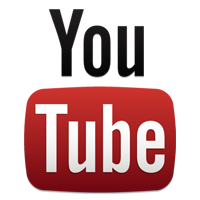livestock
The Importance of a Cow
Fri, 09/18/2015 - 18:19 — Michela Who has attended the oral session "Cattle diseases in dairy herds in Tanzania” by Silvia Alonso, from the International Livestock Research Institute in Kenya, got maybe the testimony that taking a closer look at the livestock sector in Tanzania – but not only in Tanzania – can bring some evidence about its potential benefits and wide social impacts.
Continue...
Who has attended the oral session "Cattle diseases in dairy herds in Tanzania” by Silvia Alonso, from the International Livestock Research Institute in Kenya, got maybe the testimony that taking a closer look at the livestock sector in Tanzania – but not only in Tanzania – can bring some evidence about its potential benefits and wide social impacts.
Continue...
Challenging the Old Gray Horses: Interview with Louwrens Hoffman, Part II
Wed, 09/24/2014 - 00:36 — Rachel Friedman
For more, you can also access the blog post and part I of the video.
Outside the Box: Animal Agriculture Beyond the Feedlot
Wed, 09/24/2014 - 00:32 — Rachel Friedman You might wonder why, as a long-time vegetarian, I am writing on a topic that so blatantly opposes my own dietary inclinations. Yet, the topic of the keynote address given by Louwrens Hoffman at Tropentag’s closing plenary is exactly why I must. Though many choose vegetarianism in response to animal welfare issues or because they “love” animals too much to eat them, consuming few or no animal products is a growing response to an unsustainable system of meat production. The livestock sector accounts for 18% of global greenhouse gas emissions, and contributes to soil erosion and freshwater pollution. At the same time, over a quarter of the Earth’s land surface is not suitable for growing crops, yet could support livestock.
(Continue...)
You might wonder why, as a long-time vegetarian, I am writing on a topic that so blatantly opposes my own dietary inclinations. Yet, the topic of the keynote address given by Louwrens Hoffman at Tropentag’s closing plenary is exactly why I must. Though many choose vegetarianism in response to animal welfare issues or because they “love” animals too much to eat them, consuming few or no animal products is a growing response to an unsustainable system of meat production. The livestock sector accounts for 18% of global greenhouse gas emissions, and contributes to soil erosion and freshwater pollution. At the same time, over a quarter of the Earth’s land surface is not suitable for growing crops, yet could support livestock.
(Continue...)
“Camel to human”— Anne Liljander on Nutritional Security or death?
Mon, 09/22/2014 - 14:10 — Pramila Thapa
Animal with robust health that can survive in harsh environmental conditions, camel is a good opportunity for nutritional security in South Saharan Africa, SSA. The milk and meat from camel is really good for the human health said Anne Liljander in her presentation tin Tropentag 2014, Prague. But who knows if the same camel carries the deadly virus?
With the outbreak of a deadly disease in Saudi Arabia in 2012, Middle East Respiratory Syndrome (MERS) caught an attention of researchers. Out of 250 human infections, 93 cases were reported fatal. Most of the people with this viral infection confirmed with this virus had serious respiratory illness. Anne and her team conducted research to find out the source of the virus. Finally, the viral strain was found in humped dromedary came that were imported from African Peninsula.
Getting back to the SSA, in Kenya, they found that 29% of camels were MERS positive. In the sample from 1992 (Kenya) and from 1983 (Somalia and Sudan), the camels had antibodies to MERS-Cov. It is always interesting to know if zoonotic diseases are fatal. Who knows if another “Evola-like” disease is too near to be pandemic? All the best for success on sustainable solution for the research team!
Weeds, Youth and Mangos - poster session overview.
Thu, 09/18/2014 - 19:41 — Vitalii Korol Conservation agriculture (CA) has been advocated by many scientists as the solution for sustainable agricultural production. Indeed, finding of many research project support it and it can also be seen at Poster Sessions of Tropentag2014, where successful examples were given: applying no-tillage farming had a positive influence for Acrisols in Brazil, mulching application in Kenya provided better water retention or combination of technics increased yields in Mexico. However, a case study from R. Romero-Perezgrovas says, that on 6% of increase in soil fertility on the one hand, farmer would get 50% weeds in his field.
(Continue...)
Conservation agriculture (CA) has been advocated by many scientists as the solution for sustainable agricultural production. Indeed, finding of many research project support it and it can also be seen at Poster Sessions of Tropentag2014, where successful examples were given: applying no-tillage farming had a positive influence for Acrisols in Brazil, mulching application in Kenya provided better water retention or combination of technics increased yields in Mexico. However, a case study from R. Romero-Perezgrovas says, that on 6% of increase in soil fertility on the one hand, farmer would get 50% weeds in his field.
(Continue...)




